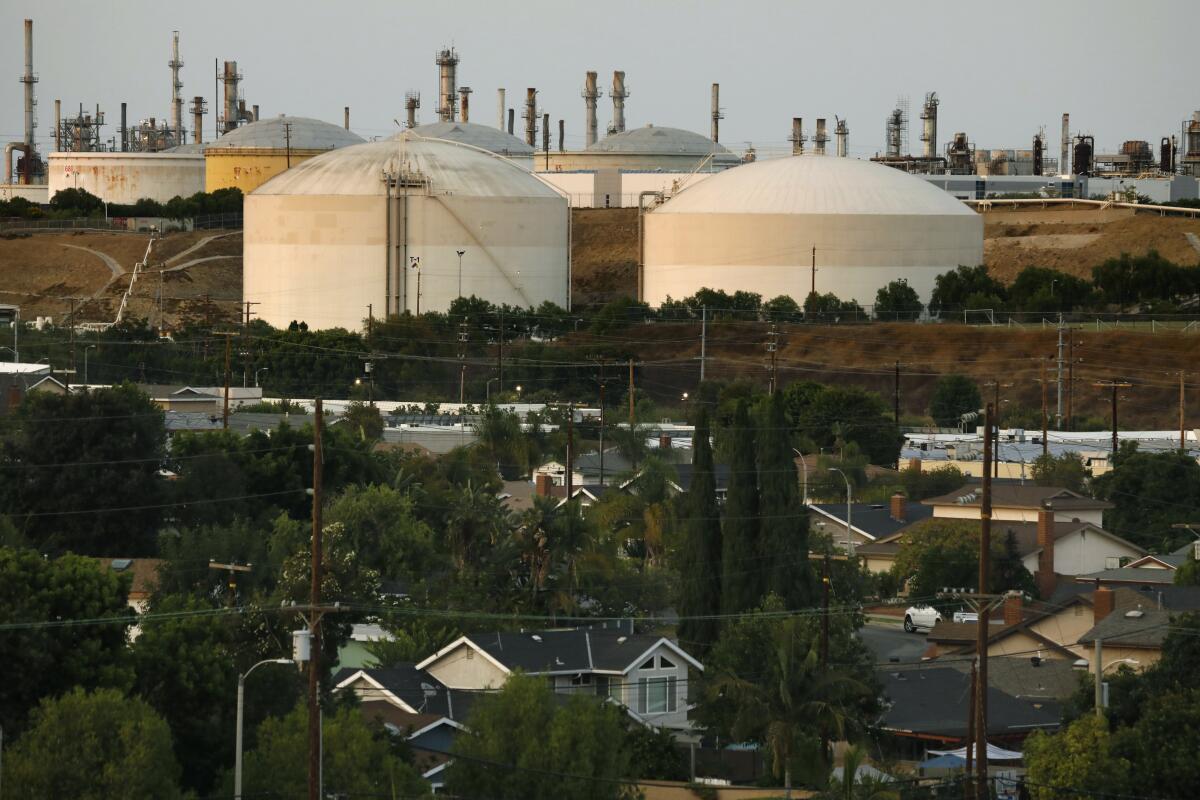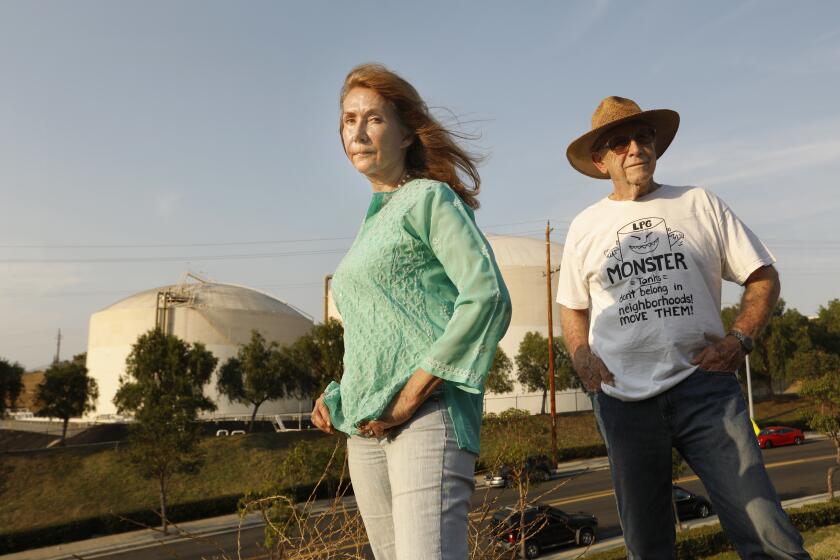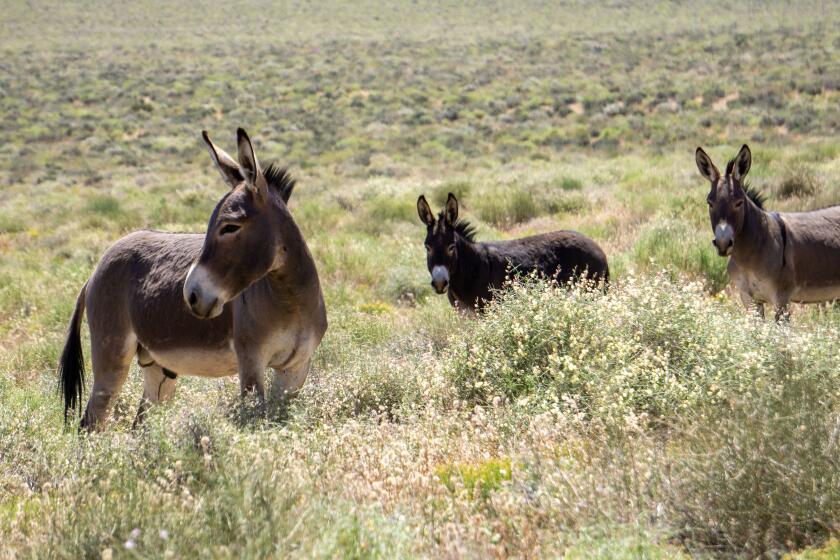L.A. councilman urges sale of San Pedro butane tanks for ‘alternative use’

- Share via
Los Angeles City Councilman Joe Buscaino is urging the owners of a San Pedro site that handles millions of gallons of liquid butane to sell it for another use, saying it “would bring a huge sense of relief to an entire community.”
Neighbors have long been alarmed by the Rancho LPG site on Gaffey Street, which includes two 12.5-million-gallon refrigerated tanks and five 60,000-gallon horizontal storage tanks.
The facility, which sits close to homes, schools and stores, handles the largest amount of butane of any facility in California, according to a database maintained by the Right-to-Know Network. Propane is also stored on the Gaffey Street site.
In a recent letter, Buscaino said he had learned that the San Pedro property might be up for sale and urged the company to sell it to a “non-petroleum” or “alternative use buyer” in order to end the anxiety over the facility.
The councilman, whose district includes the neighborhoods of Watts, Harbor Gateway, Wilmington and San Pedro, also offered to meet with the company and assist.
“I am extremely confident that I can quickly bring the right developers to the table if needed,” Buscaino wrote in the letter sent last month to a Rancho LPG representative, which The Times obtained through a public records request.
The Beirut explosion has underscored fears in San Pedro, where residents worry that hefty tanks storing butane could catalyze a deadly disaster.
A representative for Plains All American Pipeline, whose subsidiary owns the site, did not respond to messages seeking comment on the letter and whether the company was considering selling the Rancho LPG property. Buscaino spokesman Branimir Kvartuc said the councilman had spoken with the company about his request but declined to comment further.
The huge tanks off Gaffey Street have been a long-standing concern for San Pedro residents who fear they could cause deadly explosions and fires during an earthquake or terrorist attack.
Plains All American Pipeline has repeatedly rejected arguments that the site poses a safety risk, saying that it is regulated by numerous agencies and has undergone safety upgrades to maintain a “high standard for operational safety, security, reliability and efficiency.”
The debate over its dangers erupted soon after the tanks were built in the 1970s and has gone on for decades. Neighbors sued unsuccessfully over the site and have fruitlessly pushed local, state and federal officials to try to shut it down.
Concerned residents and the company have repeatedly clashed over wildly different estimates of how far any blast could reach. Experts consulted by The Times last year questioned whether company estimates of half a mile or less had adequately accounted for the possible risks from a cloud of vapor rising from a vast pool of spilled butane.
San Pedro faces many potential hazards because of the nearby port, “but this one is such a glaring example,” said Janet Schaaf-Gunter, a member of San Pedro Peninsula Homeowners United. If the site is converted for another use, “it would mean a great deal to the public safety of the immediate area — and really the state of California for protecting its assets.”
Schaaf-Gunter said she was disappointed, however, that getting rid of the tanks might depend on the willingness of Plains All American Pipeline to give up the site, rather than government officials forcing such action.
The Houston-based company has been cutting costs and selling off assets over the last year, with more sales planned this year, according to a recent presentation to investors.
Last year, it agreed to pay over $60 million to settle litigation arising from an oil spill near Santa Barbara; a jury had previously found Plains All American Pipeline guilty of criminal charges over the 2015 spill.
More to Read
Sign up for Essential California
The most important California stories and recommendations in your inbox every morning.
You may occasionally receive promotional content from the Los Angeles Times.












